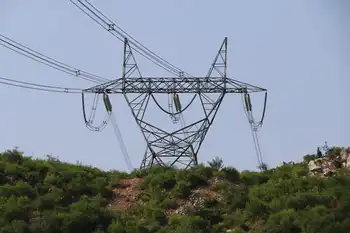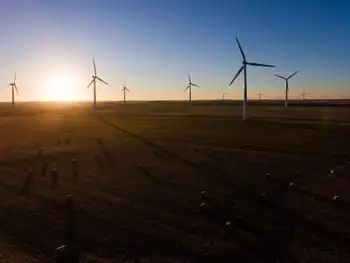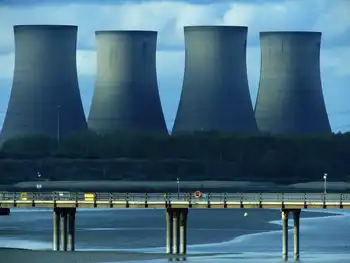The Pickens Plan leans heavily on government
By Financial Post
Substation Relay Protection Training
Our customized live online or in‑person group training can be delivered to your staff at your location.

- Live Online
- 12 hours Instructor-led
- Group Training Available
The consequences for the rest of us can be profound, especially when the plan at issue is a colossus of epic proportions.
The Pickens Plan, touted by him to save the United States from calamity, has two wildly ambitious steps. Step one: The United States should construct a mammoth north-south electricity transmission corridor from Texas through the Great Plains states to Canada.
Wind turbines in Texas and throughout the corridor would then generate electricity, displacing the natural gas now used to generate electricity. Step two: The United States and Canada should run trucks and automobiles on the natural gas that has been saved, displacing gasoline.
PickensÂ’ two-step has great appeal to those on the left side of the political spectrum because, as he argues, his plan would slash greenhouse-gas emissions. And it has great appeal to those on the right because, as he also argues, his plan will reduce AmericaÂ’s dependence on oil imported from enemy countries. The other great appeal in the Pickens Plan, rarely mentioned, is to Pickens personally.
Among other wind schemes, Pickens planned a 400,000-acre wind farm in the Texas Panhandle, the worldÂ’s largest by far. And Pickens, long one of AmericaÂ’s major natural-gas developers, has now made one of the biggest bets of his career on his Clean Energy Fuels Corporation, which builds natural-gas fuelling stations for vehicles.
Men without imagination consider the Pickens Plan to be wildly implausible. For starters, what are the odds of converting cars to natural gas cars when gasoline dominates and electric vehicles are in fashion? With the exception of Honda and its Civic GX, pictured below, no major automaker manufactures a natural-gas car, and even if some did, these cars couldn’t get refuelled — vanishingly few gas stations offer fill-ups of natural gas.
There are also performance reasons to shy away from natural-gas vehicles — they require larger gas tanks, robbing cars of half their trunk space; even with a larger tank, they require fill-ups almost twice as often; and they can explode. Little wonder that fewer than one-tenth of 1% of the 250 million vehicles on the road run on natural gas.
Pickens does not lack for imagination. He imagined that natural-gas vehicles at half the cost of the $25,000 Honda Civic GX would spark demand. To turn fantasy to reality, Pickens approached those ablest to get the job done — not the top designers and engineers at Honda and other manufacturers but the top U.S. lawmakers. Senate Majority Leader Harry Reid of Nevada, Senator Robert Menendez of New Jersey, Orrin Hatch of Utah, joined by Pickens himself, announced legislation to lower the cost of driving a natural gas vehicle.
The legislation would cover up to $12,500 for passenger cars and light trucks and $64,000 for heavier vehicles. Even better, this bill doesn’t stop at halving the cost of buying a natural gas vehicle. It also lowers the cost of buying natural gas for vehicular use. And it expands and extends tax incentives for the installation of Pickens-style refuelling stations — builders of natural-gas refuelling stations will be able to receive up to $100,000 per station.
All this and more — coupled with similar legislation recently introduced in the House of Representatives — is a great improvement on previous subsidies that the U.S. government passed in 2005 to help secure Pickens’ vision of a sound energy policy for America.
Pickens personifies the never-say-die American entrepreneurial genius in working the political system.
Just months earlier, in November 2008, Pickens and his Clean Energy Fuels Corporation had suffered a disappointing setback when California voters rejected Proposition 10, a referendum that his firm helped write, and then backed through a multi-million dollar campaign contribution. Had it succeeded, Prop 10 would have provided close to $10-billion in alternative-energy rebates and incentives, almost all of it to the exclusive benefit of PickensÂ’ company.
No quitter, Pickens immediately turned his lobbying talents to the U.S. Congress. “If you’re on the right side of the issue, just keep driving until you hear glass breaking. Don’t quit,” he likes to say.
Step two in Pickens plan — creating the infrastructure for natural-gas vehicles — now seems well in hand. Step one — his bid to make the wind blow for him — is next on his agenda. Count on him to again work the system and to employ once more a principle that has stood him in good stead over one of the most storied careers in U.S. corporate history: “Make sure as many people as possible have a stake in the game.”
By enabling Republican and Democratic lawmakers in their energy independence and global warming causes, he gives them a stake in a game he has every intention of winning.











